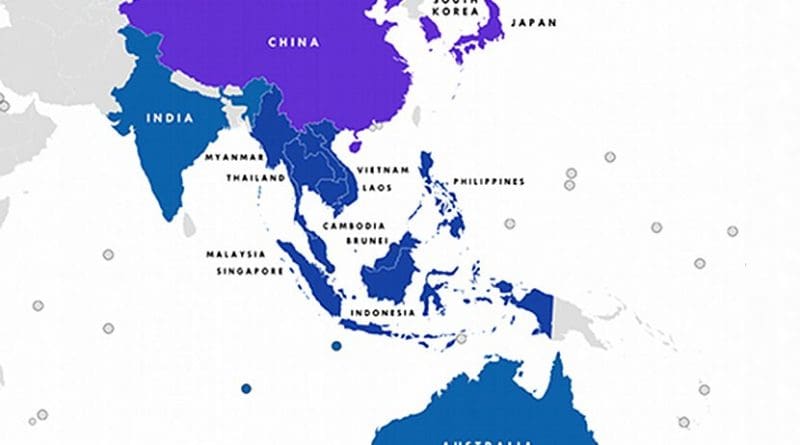RCEP Asia Trade Pact Draws US Allies Toward China – Analysis
By VOA
By Jay Heisler
U.S. trade experts are watching warily as the world’s biggest free trade pact advances slowly toward ratification and brings some of America’s closest Asian allies into an economic bloc that includes China but leaves the United States on the sidelines.
Analysts in Australia and New Zealand — both signatories to the Regional Comprehensive Economic Partnership, or RCEP — have a more mixed view of the agreement, suggesting it holds both benefits and challenges for the United States.
Concluded in November 2020 after eight years of negotiations, RCEP embraces all 10 members of the Association of Southeast Asian Nations as well as Australia, China, Japan, New Zealand and South Korea. Collectively the countries account for about 30% of global GDP.
China, Japan and two ASEAN countries have already ratified the pact. To take effect it must still be ratified by four more ASEAN members and one more non-ASEAN member.
The RCEP negotiations were long overshadowed by U.S.-backed talks on the Trans-Pacific Partnership or TPP, a rival trade agreement that would have included the United States and some of its Western Hemisphere neighbors, while excluding China.
But with opposition to any new free trade deal running high among both parties in Washington, former President Donald Trump pulled the U.S. out of the TPP, clearing the path for the RCEP to advance.
“One impact for the United States is clear,” said Patrick Quirk a senior director with the International Republican Institute and a nonresident fellow in the foreign policy program of the Brookings Institution research organization in Washington.
“RCEP could be a boon for China,” Quirk said in an interview. “Beijing will undoubtedly promote its increased economic interdependence with and influence over several key U.S. regional allies.”
Quirk added that RCEP “weakens Washington’s relative economic leverage with member countries.”
But Asian-based analysts say American fears about RCEP may be overstated.
RCEP “may lead to a lower proportion of RCEP countries’ trade being outside the bloc, including with the U.S.,” acknowledged Jeffrey Wilson, research director at the Perth USAsia Center in Australia.
But, he said, “RCEP benefits the U.S. by buttressing the integrity of the global trading system. … As the Biden administration seeks to protect the rules-based trade system against emerging threats, RCEP shows that Indo-Pacific governments are committed to the same agenda.”
Shiro Armstrong, director of the Australia-Japan Research Center at Australian National University, offered a similarly nuanced view, saying the pact would have “mixed results” for the United States.
“It’s hard to say that the U.S. is the big loser. It’s a bit more complicated than that,” he told VOA, adding that the United States “will be relatively worse off in some markets” but that RCEP “helps keep markets in this part of the world open” at a time when protectionism is on the rise.
Jane Kelsey, a professor at the University of Auckland in New Zealand, argued that former U.S. President Barack Obama fostered “a lot of misconceptions” about the RCEP, with its potential to enhance Chinese influence, in an effort to advance the TPP over domestic U.S. opposition.
But many New Zealanders were more concerned about excessive U.S. influence, she said. “In New Zealand we had massive protests against the [TPP]. We had virtually none against RCEP.”
Australian Senator Eric Abetz told VOA that U.S. allies in the region felt they could not afford not to participate in the RCEP but that they would do so warily.
“The U.S. continues to be our most important strategic friend and ally and that won’t change, but being in the part of the world that we are in, it makes good sense for us to be part of a very significant trading bloc,” he said.
“Some people do see RCEP as potentially advancing China’s position and that is something that we will monitor closely.”

